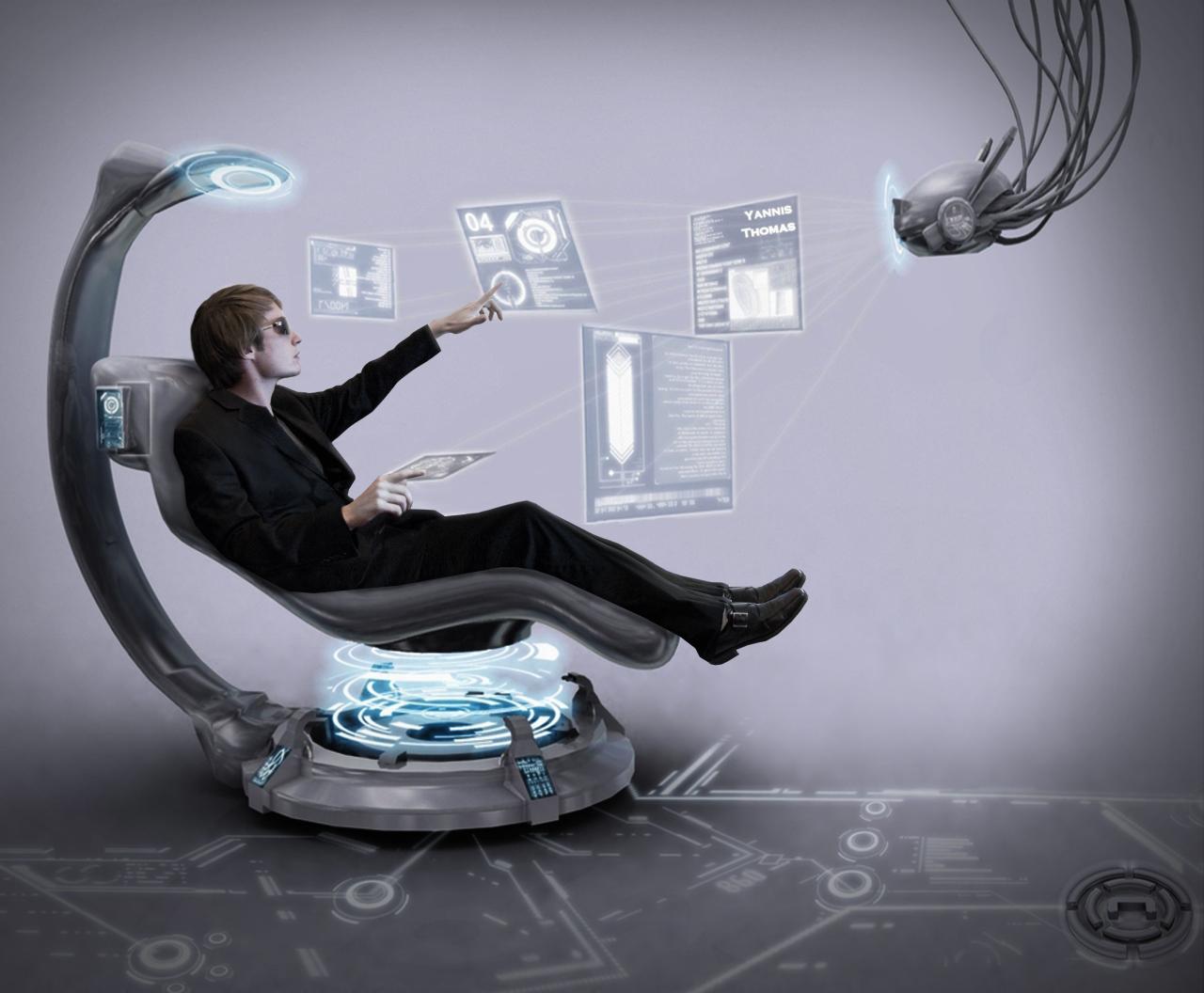Cutting-Edge Gadgets Shape Future Technology

In today’s fast-paced digital era, technology is evolving at an unprecedented rate, driven by constant innovation and the relentless pursuit of efficiency. Cutting-edge gadgets are no longer just tools for communication or entertainment—they are pivotal devices that shape the way we work, learn, and interact with our environment. This article delves into the transformative impact of modern gadgets, examining how these devices are revolutionizing various sectors, influencing consumer behavior, and paving the way for future technological advancements. As we explore the evolution, key features, challenges, and future trends of these breakthrough innovations, we also highlight their significance for businesses and everyday users alike.
The Evolution of Gadgets in a Digital World
Technology has come a long way since the early days of bulky computers and basic mobile phones. Today’s gadgets are sleek, powerful, and integrated with sophisticated features that were once the realm of science fiction. The evolution of gadgets can be categorized into several transformative phases:
A. From Basic Tools to Smart Devices
Early electronic devices served fundamental purposes—calculating numbers, storing information, or facilitating basic communication. Over time, the integration of microprocessors, sensors, and wireless connectivity transformed these tools into intelligent gadgets capable of multitasking and data processing. This transition is marked by:
A. Miniaturization: Devices have shrunk in size while increasing in functionality.
B. Integration: Multiple functionalities are combined into a single device.
C. Interconnectivity: Gadgets now communicate with each other through the Internet of Things (IoT).
D. User-Centric Design: Emphasis on intuitive interfaces and seamless user experiences.
B. The Rise of Smart Technologies
The advent of smartphones, wearable devices, and smart home technologies has redefined modern living. These devices are not just connected—they are smart, learning from user behaviors and adapting to individual needs. Key characteristics include:
A. Artificial Intelligence (AI): Gadgets now use AI to personalize user interactions.
B. Machine Learning (ML): Continuous learning processes enable devices to improve functionality over time.
C. Cloud Integration: Data is stored and processed in the cloud, ensuring accessibility from anywhere.
D. Enhanced Connectivity: 5G and beyond promise faster, more reliable connections.
Innovations Driving Future Technology
The future of technology is being shaped by a new wave of innovations that push the boundaries of what gadgets can do. These breakthroughs are not only improving efficiency but also redefining how technology interacts with the world.
A. Artificial Intelligence and Machine Learning Integration
AI and ML are at the forefront of technological innovation, transforming ordinary gadgets into smart companions capable of decision-making and predictive analysis. Their integration into modern gadgets has led to:
A. Personalized User Experience: Devices adapt to individual preferences and usage patterns.
B. Predictive Maintenance: Early detection of potential issues ensures uninterrupted performance.
C. Enhanced Security: AI algorithms monitor and protect devices from cyber threats.
D. Automation: Routine tasks are automated, freeing up user time for more complex activities.
B. Internet of Things (IoT) and Connectivity
IoT is a network of interconnected devices that share data and work in unison. This interconnected ecosystem is transforming industries by enabling smart environments in homes, offices, and cities. The key benefits include:
A. Real-Time Data Sharing: Devices communicate instantly, providing timely insights.
B. Smart Home Integration: From thermostats to security systems, IoT devices create automated living spaces.
C. Industrial Automation: Factories leverage IoT for improved efficiency and reduced downtime.
D. Environmental Monitoring: Sensors track climate conditions, contributing to sustainable practices.
C. Augmented Reality (AR) and Virtual Reality (VR)
AR and VR are revolutionizing how we experience digital content, blending the virtual and real worlds. These technologies are finding applications in entertainment, education, healthcare, and beyond:
A. Immersive Learning: AR and VR provide interactive educational experiences.
B. Enhanced Gaming: Virtual reality offers gamers a fully immersive environment.
C. Remote Collaboration: Virtual meeting spaces allow for more engaging remote interactions.
D. Training and Simulation: Realistic simulations enhance training in high-risk industries.
D. Wearable Technology and Health Gadgets
Wearable gadgets have redefined personal health and fitness tracking, enabling users to monitor their well-being in real time. The latest innovations include:
A. Smartwatches: Beyond timekeeping, they track health metrics like heart rate and sleep patterns.
B. Fitness Bands: Affordable devices that monitor physical activity and provide performance insights.
C. Health Monitoring Devices: Gadgets that measure vital signs, alerting users to potential health issues.
D. Integration with Mobile Apps: Seamless synchronization with smartphones ensures data is always at hand.
Impact on Industries and Daily Life
The influence of cutting-edge gadgets extends far beyond individual usage; they are catalysts for change across various industries and sectors. Let’s explore some of the most notable impacts:
A. Business and Productivity
Modern gadgets have revolutionized workplace productivity by streamlining operations and facilitating seamless communication. The benefits for businesses include:
A. Enhanced Mobility: Employees can work from virtually anywhere using portable devices.
B. Efficient Communication: Real-time collaboration tools boost teamwork and reduce delays.
C. Data-Driven Decision Making: Gadgets equipped with analytics provide valuable insights into business performance.
D. Cost Savings: Automation and smart devices reduce operational costs significantly.
B. Education and E-Learning
The education sector has embraced technology to offer interactive and engaging learning experiences. Gadgets are transforming classrooms and e-learning platforms through:
A. Interactive Learning Tools: Tablets, smart boards, and AR applications enhance student engagement.
B. Remote Learning: High-speed internet and connected devices facilitate virtual classrooms.
C. Personalized Education: AI-driven applications tailor learning experiences to individual needs.
D. Access to Global Resources: Digital libraries and online courses broaden educational opportunities.
C. Healthcare and Wellbeing
Advancements in medical gadgets are revolutionizing healthcare, making it more accessible and efficient. Key impacts include:
A. Telemedicine: Remote consultations allow patients to receive care without visiting a hospital.
B. Wearable Health Monitors: Continuous tracking of vital signs leads to early detection of health issues.
C. Robotic Surgery: Precision robotics improve surgical outcomes and reduce recovery times.
D. Data-Driven Healthcare: Integration of gadgets with health databases facilitates better diagnosis and treatment plans.
D. Entertainment and Media
The entertainment industry is undergoing a technological renaissance thanks to cutting-edge gadgets. These devices are changing how we consume content, interact with media, and participate in immersive experiences:
A. High-Resolution Displays: Gadgets deliver stunning visuals and enhanced audio for an immersive experience.
B. VR and AR Entertainment: New forms of media allow users to experience stories in innovative ways.
C. Mobile Gaming: Advanced smartphones and gaming consoles drive the popularity of mobile gaming.
D. Streaming Innovations: Smart TVs and connected devices revolutionize content streaming.
E. Smart Cities and Urban Development
The future of urban living is being shaped by smart technologies that make cities more efficient, sustainable, and livable. Cutting-edge gadgets play a crucial role in:
A. Traffic Management: Sensors and cameras optimize traffic flow and reduce congestion.
B. Energy Efficiency: Smart grids and IoT devices manage energy consumption more effectively.
C. Public Safety: Surveillance systems and emergency response gadgets enhance urban security.
D. Waste Management: Technology-driven solutions improve recycling and waste disposal processes.
Challenges and Considerations
While cutting-edge gadgets offer enormous benefits, they also bring challenges that must be addressed to ensure sustainable and ethical technological progress.
A. Security and Privacy Concerns
As gadgets become more interconnected, the risk of cyber threats increases. Ensuring the security of personal data and sensitive information is paramount. Key concerns include:
A. Data Breaches: Unauthorized access to personal and corporate data.
B. Privacy Invasions: The potential for constant monitoring and data misuse.
C. Cyberattacks: Increased vulnerability to malware, ransomware, and other cyber threats.
D. Regulatory Compliance: The need for robust legal frameworks to protect consumer rights.
B. Environmental Impact
The rapid production and disposal of electronic gadgets contribute significantly to environmental degradation. Addressing these concerns requires a focus on:
A. Sustainable Manufacturing: Emphasizing eco-friendly materials and processes.
B. Recycling Programs: Implementing efficient recycling systems to reduce electronic waste.
C. Energy Consumption: Developing gadgets that are energy-efficient and have a lower carbon footprint.
D. Innovation in Green Technology: Investing in research for sustainable technology solutions.
C. Economic and Social Implications
The widespread adoption of advanced gadgets can disrupt traditional industries and labor markets. It is crucial to consider:
A. Job Displacement: Automation and AI-driven devices may lead to job losses in certain sectors.
B. Digital Divide: Ensuring equal access to advanced technology across different socioeconomic groups.
C. Economic Inequality: Addressing the gap between high-tech industries and traditional sectors.
D. Social Adaptation: Helping communities adapt to rapid technological changes through education and training.
Case Studies: Real-World Impact of Cutting-Edge Gadgets
To better understand the transformative power of modern gadgets, it is helpful to examine real-world examples across different sectors.
A. Smart Home Revolution
A leading technology firm introduced a range of smart home devices that integrate seamlessly with everyday living. These gadgets allow users to control lighting, temperature, security, and entertainment systems via a single mobile application. The results were impressive:
A. Increased Efficiency: Homeowners reported significant reductions in energy bills.
B. Enhanced Security: Integrated systems provided real-time alerts, ensuring prompt responses to potential threats.
C. User Convenience: The ease of controlling multiple devices from one interface led to widespread adoption.
D. Market Growth: The demand for smart home gadgets spurred innovation in related sectors, driving further technological advancements.
B. Wearable Health Devices
A startup focused on wearable technology developed a health-monitoring gadget that tracks vital signs, sleep patterns, and physical activity. By providing users with real-time feedback and personalized health tips, the device achieved several milestones:
A. Preventive Healthcare: Early detection of irregularities allowed users to seek medical advice promptly.
B. Lifestyle Improvements: Users reported improved fitness levels and better sleep quality.
C. Data Integration: The device seamlessly integrated with health apps, providing comprehensive insights.
D. Consumer Trust: Positive reviews and high user engagement propelled the gadget to become a market leader.
C. Industrial IoT Applications
An industrial conglomerate deployed a network of IoT-enabled gadgets to streamline its manufacturing processes. By integrating sensors and smart devices throughout the production line, the company achieved:
A. Optimized Operations: Real-time monitoring and predictive analytics reduced downtime.
B. Cost Savings: Energy-efficient practices and automated maintenance resulted in substantial savings.
C. Increased Productivity: Enhanced data collection and analysis led to more informed decision-making.
D. Safety Improvements: Smart sensors detected potential hazards, reducing workplace accidents.
The Road Ahead: Future Trends and Innovations
The pace of technological advancement shows no sign of slowing down. The future holds numerous possibilities for the evolution of gadgets that will further transform our lives. Here are some emerging trends to watch:
A. Quantum Computing Integration
Quantum computing promises to revolutionize data processing capabilities. Future gadgets may harness quantum technology to deliver unparalleled speed and efficiency in tasks such as encryption, simulation, and problem-solving.
B. Biotechnology and Wearable Innovation
The convergence of biotechnology and wearable technology could lead to groundbreaking health applications. Imagine gadgets that not only monitor vital signs but also administer personalized treatments based on real-time data analysis.
C. Enhanced User Interfaces
The evolution of user interfaces—from touchscreens to gesture-based controls and voice recognition—will continue to make gadgets more intuitive and accessible. Future devices are likely to incorporate brain-computer interfaces, allowing users to interact with technology using thought alone.
D. Sustainable and Eco-Friendly Designs
As environmental concerns mount, manufacturers are increasingly focusing on sustainable designs. Future gadgets will likely be built with recycled materials, energy-efficient components, and modular designs that facilitate repair and recycling.
E. Global Connectivity Expansion
With the rollout of 5G and beyond, global connectivity will reach new heights. Enhanced network speeds and reliability will empower gadgets to perform complex tasks seamlessly, making remote work, telemedicine, and smart city applications even more effective.
Challenges in a Rapidly Evolving Landscape
Despite the enormous potential, several challenges lie ahead. Stakeholders must address these issues to ensure that the rapid evolution of gadgets benefits society as a whole.
A. Bridging the Digital Divide
As advanced gadgets become more integral to daily life, ensuring equal access to technology is critical. Governments, corporations, and communities must work together to bridge the digital divide, ensuring that all populations can benefit from technological advancements.
B. Regulatory and Ethical Considerations
With innovation comes the responsibility to protect consumers and maintain ethical standards. Regulatory frameworks must evolve in tandem with technology to address issues such as data privacy, cybersecurity, and intellectual property rights.
C. Continuous Innovation and Adaptation
The tech industry is characterized by rapid change, and companies must continuously innovate to stay ahead. This relentless pace can lead to market saturation and increased competition, making it crucial for businesses to balance innovation with sustainable growth strategies.
Strategies for Businesses to Leverage Cutting-Edge Gadgets
For businesses aiming to harness the potential of emerging gadgets, a strategic approach is essential. Here are key strategies to consider:
A. Invest in Research and Development
- A.1. Embrace Innovation: Allocate resources to explore new technologies and their applications.
- A.2. Collaborate: Partner with tech firms and academic institutions to stay at the forefront of innovation.
- A.3. Experiment: Foster a culture of experimentation to discover innovative solutions tailored to your industry.
B. Enhance Cybersecurity Measures
- B.1. Implement Robust Security: Invest in advanced security protocols to safeguard devices and data.
- B.2. Regular Audits: Conduct frequent security audits to identify and address vulnerabilities.
- B.3. Employee Training: Educate staff on the latest cybersecurity practices to minimize risks.
C. Foster a Culture of Continuous Learning
- C.1. Training Programs: Offer ongoing training to keep your workforce updated on the latest gadgets and technologies.
- C.2. Knowledge Sharing: Encourage collaboration and information exchange among team members.
- C.3. Adaptability: Cultivate a mindset that embraces change and continuous improvement.
D. Prioritize Customer-Centric Innovations
- D.1. Understand Needs: Regularly gather feedback from customers to identify pain points and opportunities.
- D.2. Customization: Develop products that can be tailored to individual user preferences.
- D.3. Quality Assurance: Maintain high standards in product design and functionality to build lasting trust.
Conclusion
Cutting-edge gadgets are at the heart of a technological revolution that is reshaping every aspect of our lives. From transforming the way businesses operate to revolutionizing personal health, education, and urban living, these devices are paving the way for a smarter, more connected future. The integration of AI, IoT, AR/VR, and sustainable design practices in modern gadgets is driving innovation at a pace that promises to redefine our relationship with technology.
As we look forward, the challenges of cybersecurity, regulatory oversight, and digital inequality must be addressed to ensure that the benefits of these advancements are distributed equitably. Businesses and individuals alike must embrace continuous learning and adaptation to thrive in this rapidly evolving landscape.
The future of technology is not just about faster processors or sleeker designs—it is about creating an ecosystem where innovation enhances the quality of life, drives economic growth, and builds a sustainable future for generations to come. By investing in cutting-edge gadgets today, we are laying the foundation for a world where technology serves as a catalyst for positive change, empowering us to achieve more than ever before.





